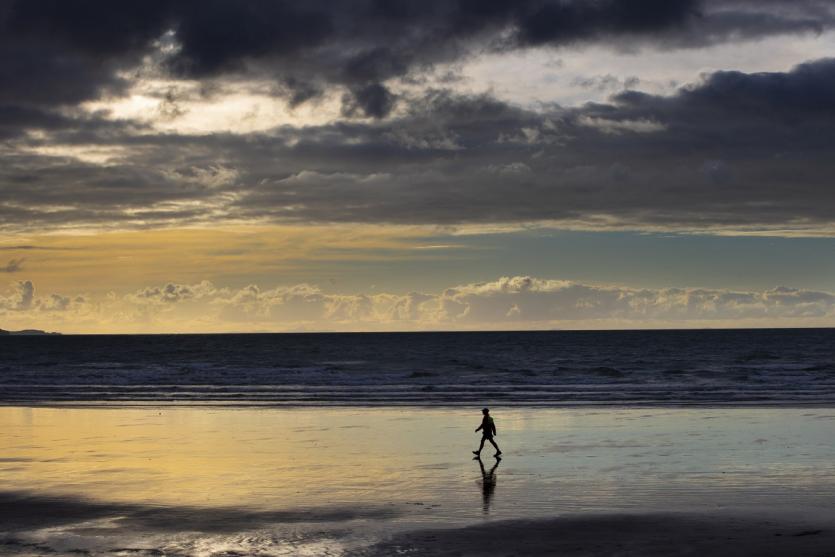A person walks on Orewa Beach in Auckland, New Zealand, on June 5, 2021. New Zealand has recorded its warmest June since recordkeeping began, as ski fields struggle to open and experts predict shorter southern winters in the future. Photo:AP
By Patryk Krych | The World Daily | JULY 5th 2021
According to official climate data, New Zealand has recently experienced its hottest June on record – the hottest since the keeping of records had even begun over 110 years ago. All this despite the country having been hit by a polar blast that month.
Data gathered by the National Institute of Water and Atmospheric Research’s (NIWA) suggested that the average temperature felt throughout June across New Zealand was a whole 2 degrees Celsius warmer than average. Record highs had been hit across twenty-four different locations across the country.
This was even despite New Zealand having been hit by an Antarctic blast, which brought wilder weather and snowfall in parts of the country’s coast. Some suburbs in the capital, Wellington, had even reported heavy hailfall.
This June of 2021 was the country’s hottest since 1909, when NIWA had first begun to keep records of monthly and annual temperatures. The data found that Motueka, a town in South New Zealand, had seen some particular rises in temperature with an average of 10.8 degrees Celsius – and entire 3.2 degrees Celsius higher than its mean from 1981 to 2010.
“Because we are an island nation, our climate is characterised as maritime, which means it is influenced by the sea. The warmer-than-normal sea surfaces helped to sustain the warmer-than-normal air temperatures,” said climate scientist Gregor Macara.
Macara referred to the month of June’s 2 degrees Celsius average rise as “a massive shift” in the island nation’s normal temperature, and that the previous average rise had been no more then 1.64 degrees Celsius.
He further stated that New Zealand’s overall average annual temperature had risen by 1C, which may seem small, but is greatly contributing to warming temperatures perpetuated by a changing climate. A gradual change that may have adverse effects on the country’s ski resorts, as well as on its agricultural sector.






